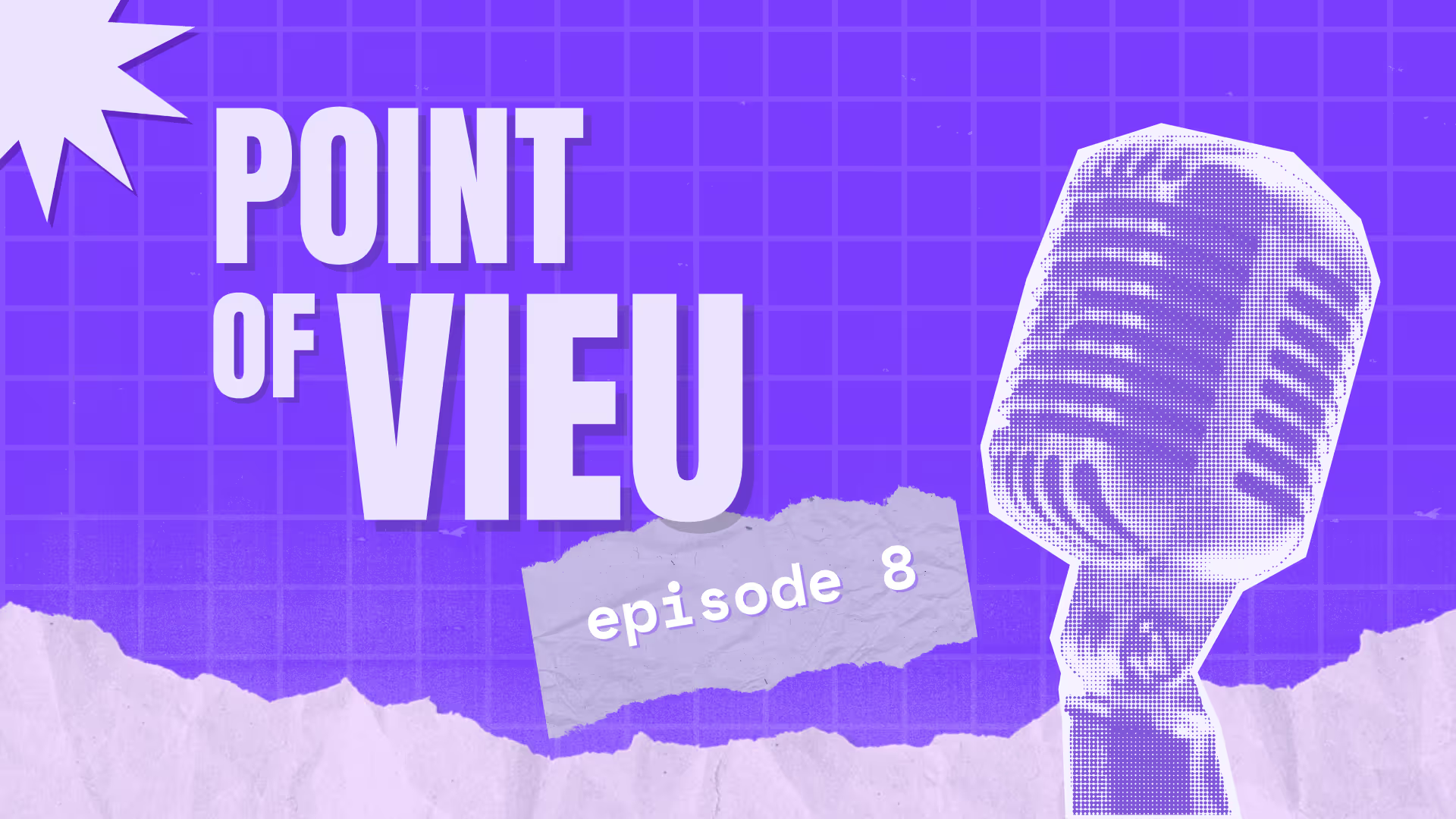B2B sales leaders face numerous challenges in today's competitive market, from speeding up sales cycles to improving buyer engagement.
The second episode of Point of Vieu featured experienced sales leaders sharing their strategies to avoid losing to competitors.
In this episode, distinguished sales explain how to manage bottlenecks, educate buyers effectively, and optimize the sales process for speed and success, offering valuable insights from the front lines of B2B sales.
Watch the episode here:
Read on to know the tips given by our experts:
Nikita Zhitkevich, VP of Sales, PartnerStack
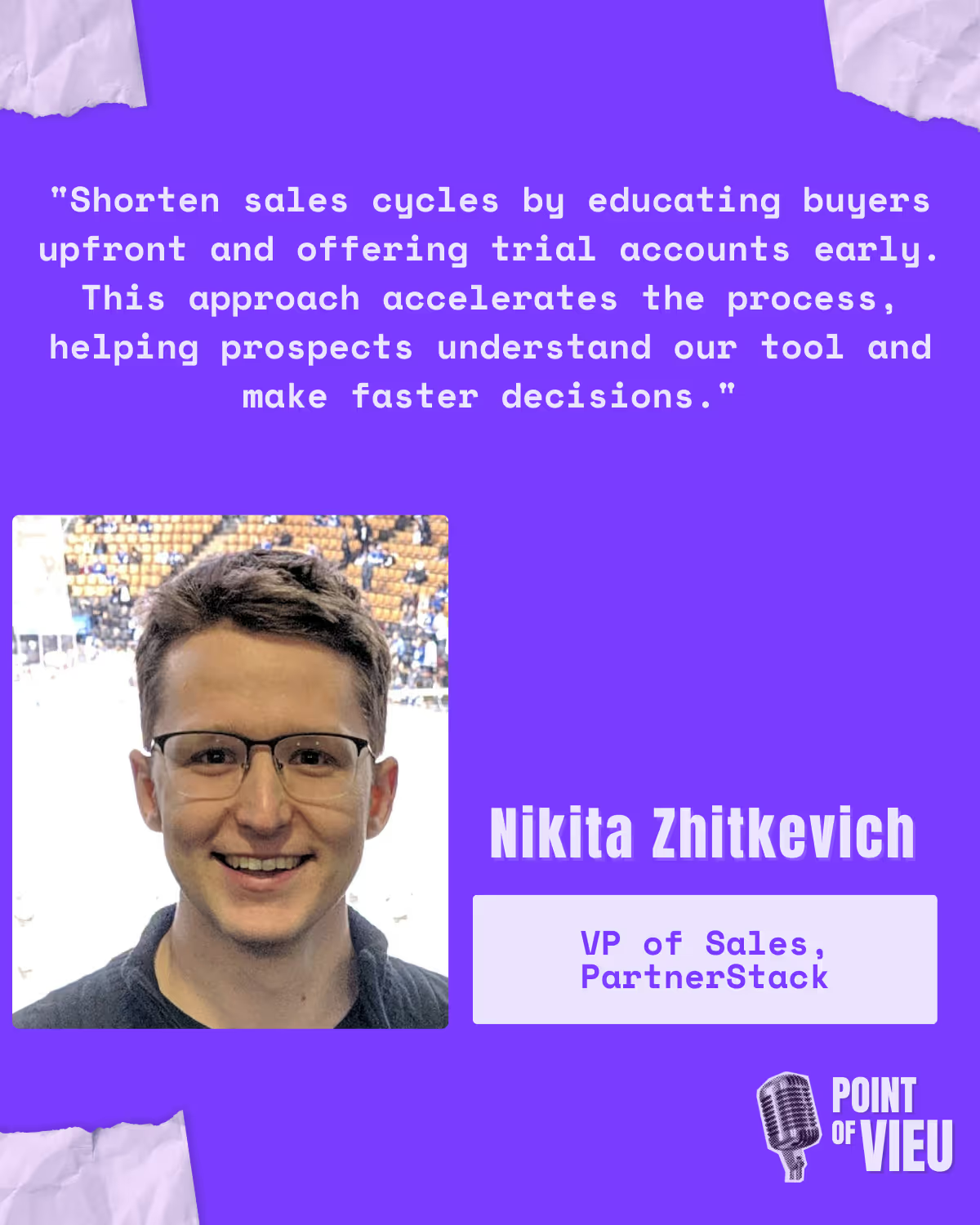
Nikita is the VP of Sales at PartnerStack, an organization dedicated to helping companies launch and scale their channel and partner programs across the board.
“PartnerStack never had too long of a sales cycle. We've never been one of those organizations where a sales cycle takes 12 months, for example. On average, our sales cycle lasts around 30 to 60, in some cases, 60 to 90 days, depending on many things.
We really try to capture and show value upfront. We educate the market on how to be effective with a tool like PartnerStack and how to do your job better. How can we accelerate the work you do or are doing today before talking to a salesperson?
So, 70-75% of buyers today do a lot of their own research, and we want to enable that research. We give them as much information up front as possible so that when they come into the sales cycle, they're at least educated about what PartnerStack is, what their partner program does, what their strategy for their partnership channel is, and drive that forward. Additionally, we also give folks the ability to experience the tool that we have.
So, something that we rolled out with our product team a little earlier this year were basically trial accounts, and I know that doesn't sound novel. There are a lot of organizations that do trials via product-led growth.
We hadn't done it before this year, but it proved to be an accelerant in a lot of ways. We saw a lot of folks continuing to bring in their team members early in the process. More people got educated on the tool and the business use case for the tool a lot sooner. It also helped us accelerate sales cycles throughout the year.
Educating the market one in advance has been effective for us. Get everybody to experience the tool as soon as possible so that they can answer the question - ‘Does this fit the needs for my use case?’.
We continue to try to be clear and transparent with customers when they come into the funnel by giving clear answers to questions such as: What their timeline is, when are they looking to move, and how can we make this an easy decision for both of you and the team?”
Joe McNeill, CRO, Influ2

Joe McNeill is the CRO at Influ2. They do contact focused advertising to help sales and marketing teams align and improve prospecting conversion rates. He’s a B2B Technology Sales Leader who combines an enthusiasm for client service delivery, employee empowerment, and robust revenue operations to position organizations to scale & grow.
“There's only so much you can do to impact your sales cycle length. I think at the end of the day, it's the prospect that's going to dictate when they can execute. But there are things you can do to shepherd the deal. I think engaging with the entire buying group is a helpful way because you really cut down on a lot of time spent on conversations.
When you're in a sales cycle and you're suggesting the next steps, suggest those next steps for tomorrow, not next week. These simple things really help with the sales cycle length. But like if they have budget cycles, if they have compelling events, if they have things like that, there's only so much you can do.
You need to focus on the things that you can control and that's engaging with all of them, scheduling the next steps as quickly as possible, and not unnecessarily delaying the conversations and stages.
But I think there's also a moment that if you push too hard on the timeline that you can turn them off too, because part of it is like both parties should want a healthy deal to come through the other side, and a healthy deal sometimes takes a little more time than a fast deal.
So, there's a lot of things you can do to control velocity, but I also think you need to accept the fact that you don't want to push too hard on that.”
Matt Wood, VP of Sales
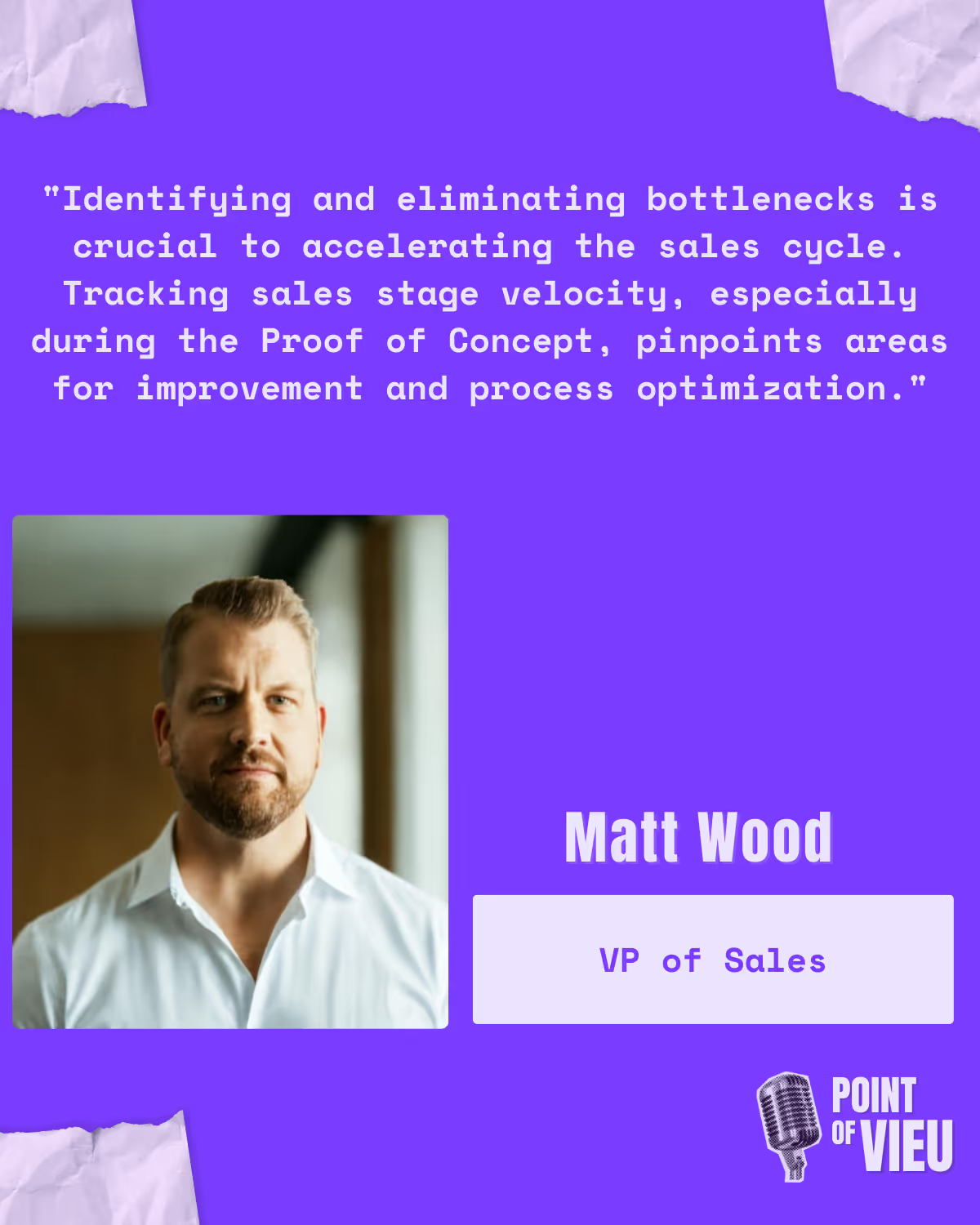
Matt Wood has spent approximately a decade in SaaS, playing a pivotal role in scaling revenue growth across multiple organizations within DevOps, cybersecurity, and data observability. His efforts have driven revenue from below $1 million to over $100 million, contributing to four successful mergers or acquisitions.
“The first thing you must look at is where the bottlenecks in the sales cycle are. I'm a big proponent of MEDDPICC for opportunity qualification. You should look at how you qualify the opportunity, but track things on a stage-by-stage basis. This is why sales stage velocity is so important to understand where the bottlenecks are.
In prior roles, things were stalling in the Proof of Validation process or Proof of Concept process. So, we looked at how we are running those and made sure we have a clear playbook, made sure that we're getting up to the economic buyer, and found ways to just shorten things at every single cycle by analyzing.”
Jeff Kirchick, VP of Sales, allwhere

Jeff Kirchick is the Vice President of Sales at allwhere, an IT asset lifecycle management software company based in New York City with approximately 45 employees. With 15 years of experience in software sales, Jeff has been a part of multiple successful exits.
Jeff is also the author of “Authentic Selling: How to Use the Principles of Sales in Everyday Life”, a book that foresaw the rise of artificial intelligence in sales and the importance of adopting a more authentic selling approach to thrive in the evolving landscape.
“I'll talk about this more on a high level, and then on a granular level.
Any good sales leader should be building out different stages with a clear exit criterion, not only measuring their success across all these stages and their conversion rates but also the velocity. The velocity is the speed at which you cross different stages, and if we're seeing that velocity is high in one stage and slow in another one, we should start diagnosing that because where you're going to find is that within your sales process, and what's slowing you down might have a common trend.
It might be all in one stage where you're commonly getting slowed down as opposed to just being slow everywhere. So, the number one tip is immediately diagnosing where we are having challenges in our sales process to understand and decide what we can do better.
I do believe that on a more granular level the things that you ought to be doing to try to reduce the time in your sales process comes down to the beginning of it. It's about who you target and how you manage discovery in those opportunities.
If you're good, you can collect enough data to build what I would call a grading and qualification system where you have a firm understanding of what makes somebody a good lead.
In theory, what you can do is look at your closed won data and your closed lost data. But within your closed won data, you could even say who are the fastest leads to close. What were the top 10-20 customers in terms of speed? What are the attributes they share? From there, you can start finding the look-alikes.
What was it a certain leader that had a business driver at the time that they needed to solve, and if so, is there intent data out there that I can leverage to go find people that have that business driver today?
Are there people searching on the Internet around this business driver that I can identify and reach out to right now? I think that's really the simplest way to reduce sales cycle.
Another way to do it is through better discovery.
I think most sales problems come down to qualification and discovery. If you don't understand what the buying process is, the pain, and the implications of the pain. Then, you are going to struggle to get the customer there along the way. But if they're able to get that right away, you're going to accelerate the sales process down the road. According to me, these are the fundamental ways to think about reducing sales cycles.”
Prakhar Jain, VP of Sales, Whatfix
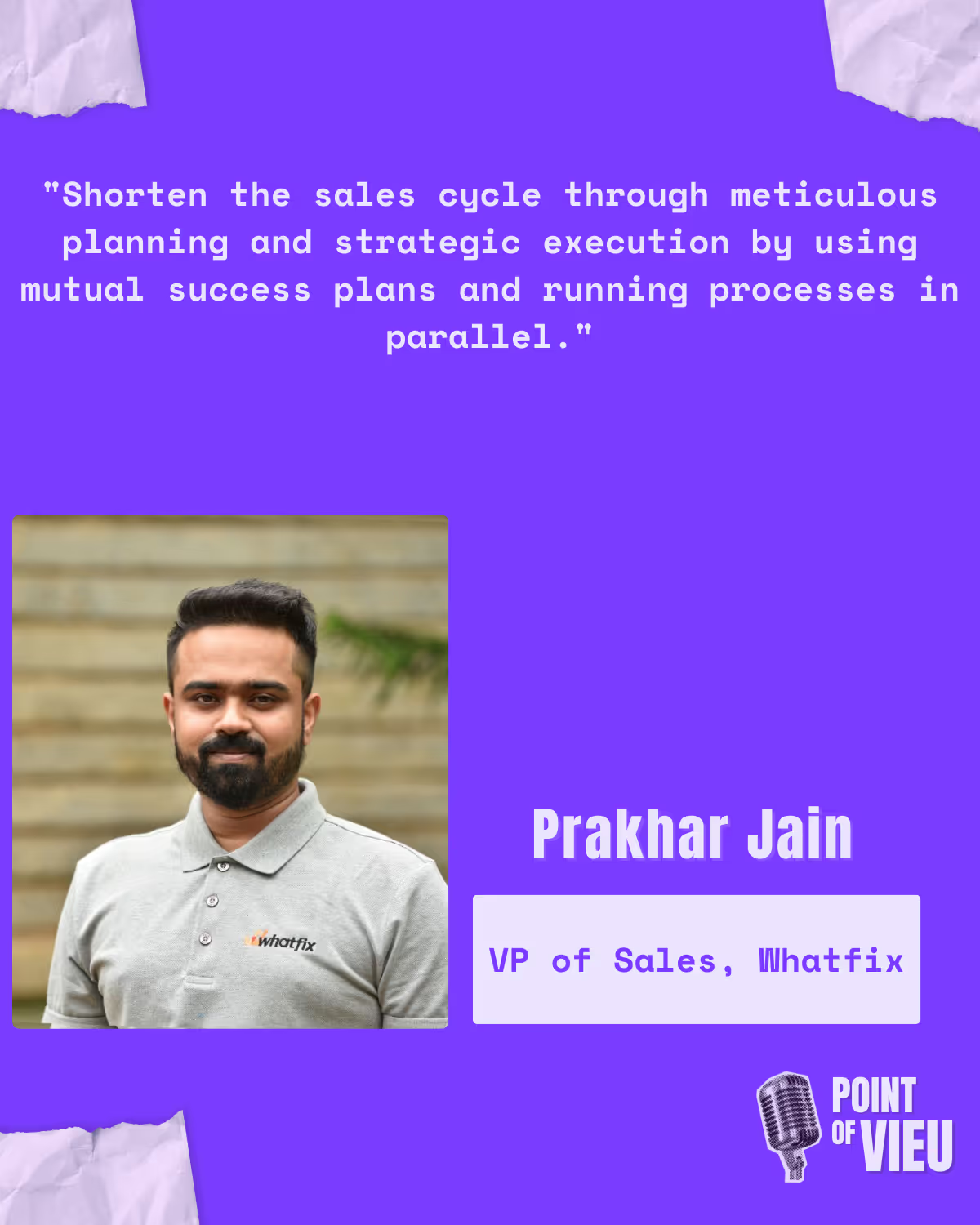
Prakhar was employee #1 at Whatfix and has been working with them for the last 10 years. Whatfix is a digital adoption platform that works with companies to simplify their end user experience. It strives to make technology user savvy. His role is to take care of new business for North America and EMEA.
“The market has been crazy, and full of surprises coming our way when we are dealing with enterprises. And that’s not new for us. We work with hundreds of Fortune 1,000 companies globally. So, it's nothing new for us, but the challenges in this market are real.
To answer your question - we have always been focused on processes, and one of them is we believe in mutual success plans.
So mutual success plans are where you lay down the bunch of steps from today to what's going to happen until signatures, and with every step laid out with every stakeholder mapped out. So that then you do the backward mapping from there.
Let's say, you are going to be live by August mid - we have only 3 weeks remaining, but we want to get to this first, second, third, and fourth step.
So, if we want to go live by then we need to do this at this pace and we plan it accordingly. This doesn't happen verbally. We run it like a project on our spreadsheet where we lay down all the steps and map all the internal stakeholders.
The details we get into are to the extent of where we even map out the holiday schedules of our prospects because if somebody is going to be out for two weeks and you have not taken that in, everything you plan will get delayed by two weeks if they are an important stakeholder in your buying process.
Sometimes, often in sales, you will hear let's say stuff like, “Oh, you know, I promise. My prospect has promised me this will get signed by Friday, and today's a Wednesday.”
Most managers will be okay with that statement because the contract is to be signed in a couple of days. We are not. At Whatfix, we get into the details of what's going to happen between now and Friday. Are any other approvals needed internally? What does the paper process look like? Is it going to go via DocuSign, or is it a hand signature process that will happen? Is the buyer's EA going to help them with it, or is it a direct process?
If it is a direct process, what other approvals are needed? If other approvals are needed, have they approved it already, and do they know about the project? If not, do we need to do something about it?
So, I think it's just going in a spiral and being paranoid about what we do. The forecast gets better when you get into that granularity. So, this is part one of my answer, which is mutual success plans.
The second part is in enterprises.
Often, there are distributed teams who are assigned different parts of a project. For example, for a project like Whatfix, there will be a separate information security team that is responsible for doing the security implications and other aspects. There will be a legal team. There will be a vendor onboarding team, and so on. Now after you have received the vendor of choice after a certain stage, you can easily get to a point of separating these processes and running them in parallel.
The vendor onboarding team doesn't necessarily need to talk to the information security team. Unless in certain cases, the process is sequential, which is rare. But these processes can all run in parallel. So now when you run these processes in parallel, each process that could have taken two weeks in isolation alone and the whole process would have been six weeks, you shorten that to two weeks.
So that's another way we try it. So, these are the two ways that come to mind immediately that give us better predictability.”
Bethany Ibarra, Chief Revenue Officer
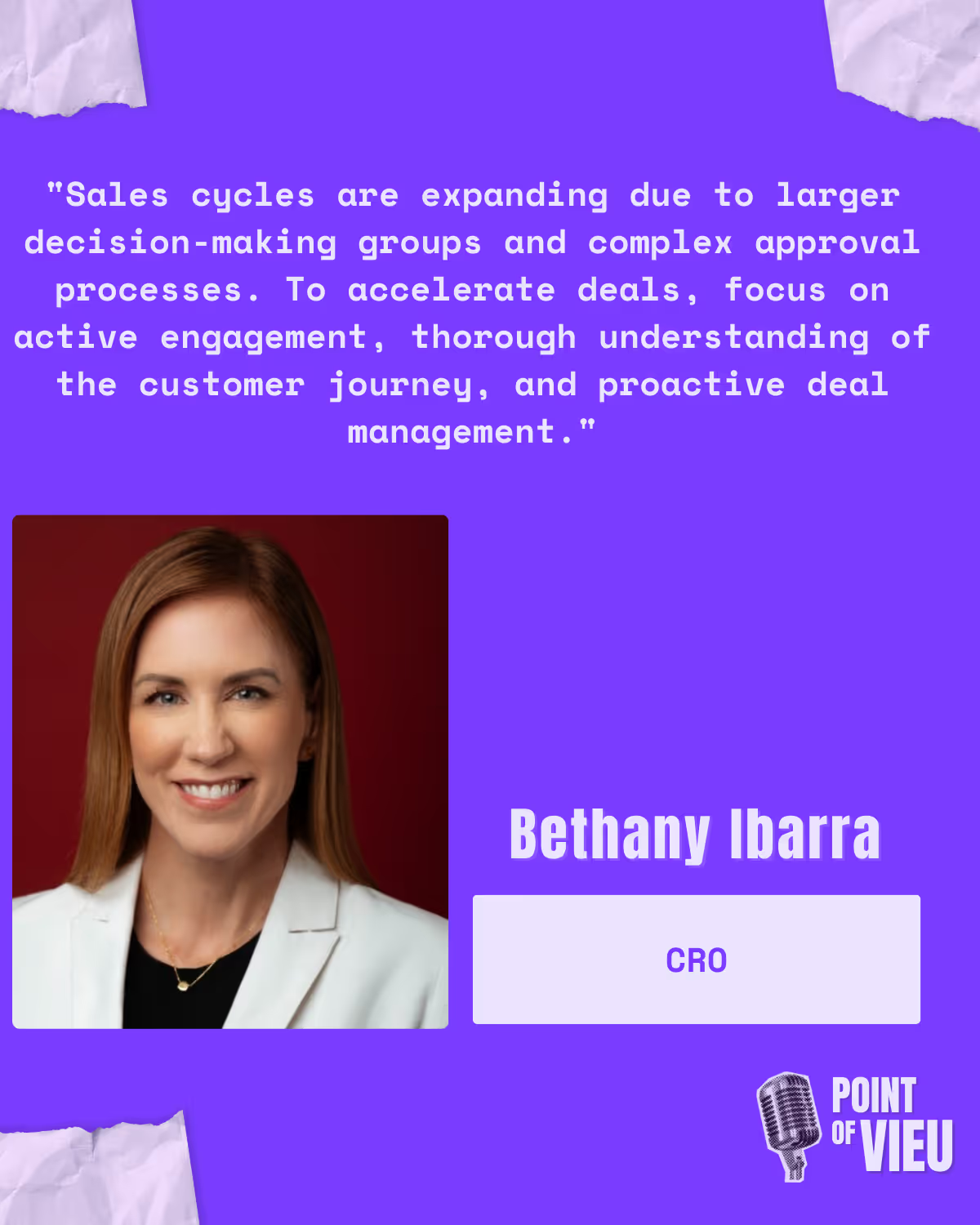
Bethany spent the first half of her career working across the business cycle at Motorola. She uncovered an opportunity that led her to build her first P&L and launch her first product. Since then, she has worked in commercial leadership in companies such as Lenovo, Google, and Motorola. Recently, she was the Chief Revenue Officer at an engineering firm that designed and developed machine learning systems.
“Sales cycles are elongating, not shortening, just by the virtue of the larger buying committees, budgets that are scrutinized, budget releases that often you won't have control, and the people you're engaging with at the enterprise won't have control over that approval cycle. So, you must focus on what you can control.
So even in midst of all that, as that interface of your company, having that explorer mentality, you don't work there. Even if you used to work with that company, things could have changed. Processes could have changed. There could be another signature that's required.
It is important to stay curious and ask questions. I had someone in my professional network contact me a couple of weeks ago. His company was starting to move up funnel into the enterprise, had been serving a lot of mid-market smaller companies, and he was running into snags. They were getting verbal approval to sign off on a new contract with a new customer, and it was taking a month plus to get the contract signed.
So, every step of the way, there's an opportunity. I gave him some quick tips that seemed to be effective. As soon as you get that verbal approval, schedule that in person kickoff.
That does a couple of things.
One, it provides high-touch personalization to your kickoff or initial training or engagement of the cross-functional team. But it's also a trigger for your key stakeholders to push for sign-up internally because it's usually not one sign-off. So, there are different tactics you can use along the way like staying vigilant and asking good questions. It's about being an explorer through that journey and not ever assuming that your key stakeholder knows the full process or that the process has stayed static.”
Conclusion
Shorten sales cycles through precision, not just speed. Engage the entire buying group early, educate prospects thoroughly, and provide clear next steps. Streamline processes from discovery to decision to accelerate progress without compromising deals. Identify bottlenecks, ensure transparency, and run parallel workflows where possible.


